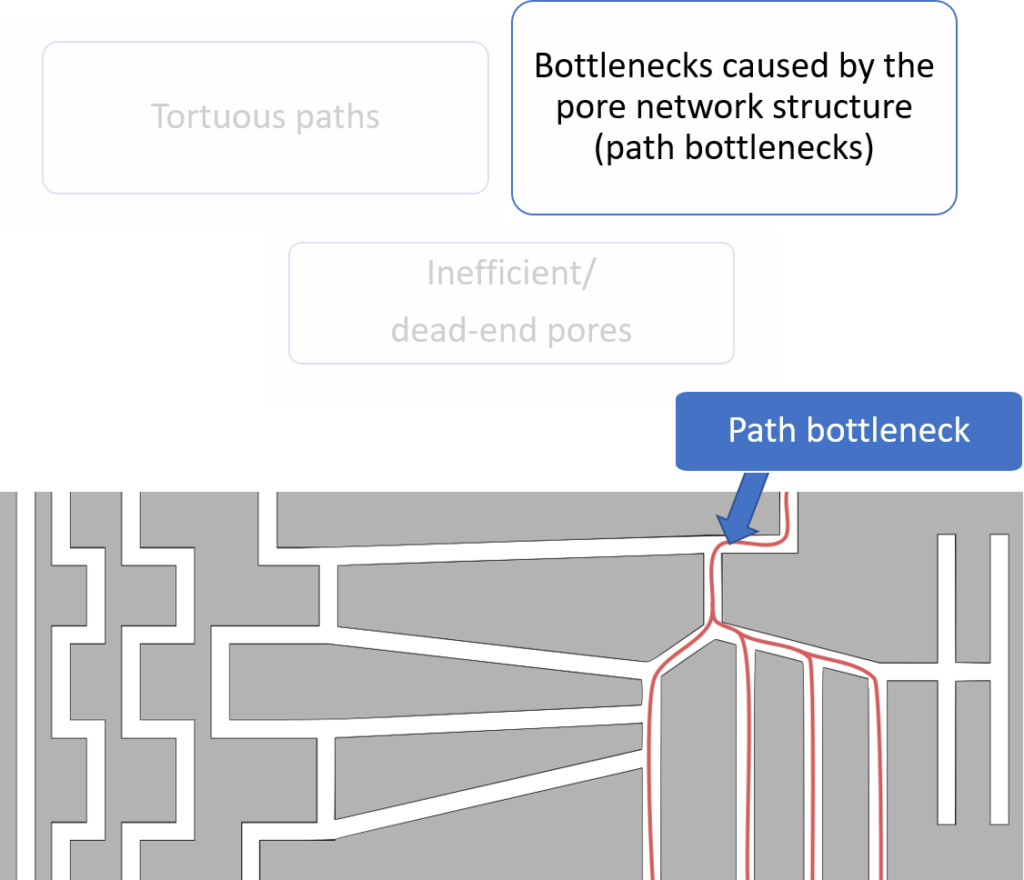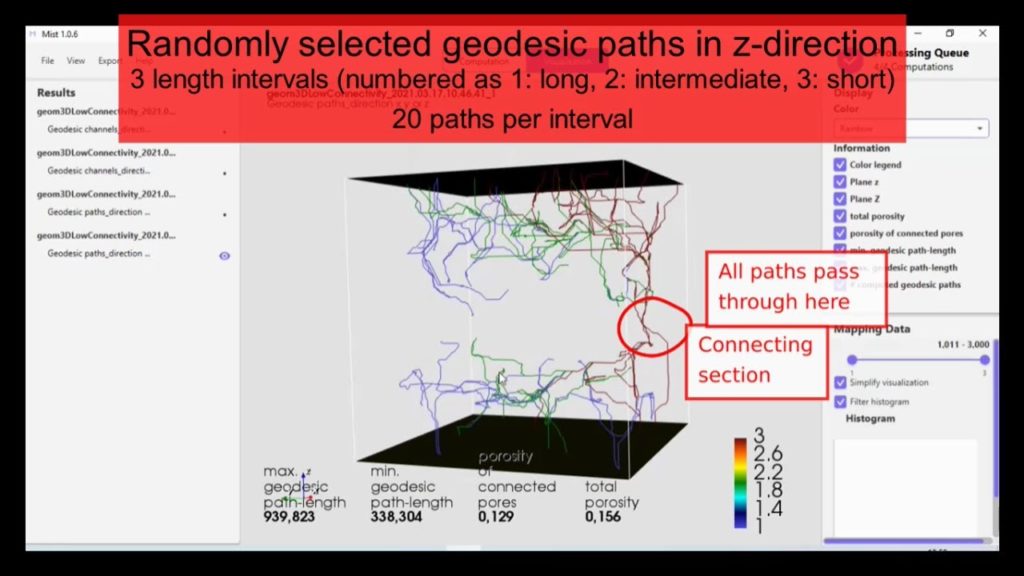Geodesic paths and geodesic channels
Geodesic paths (definitions below) are useful for investigating how pore networks are connected. Whereas the geodesic distance and geodesic tortuosity are related to the length of geodesic paths, the geodesic channel strength is related to the distribution of geodesic paths throughout the pore network.
Definition, geodesic path, box
Shortest path through the pore space that connects a pore voxel (source point) to the closest pore voxel in the box.
Definition, geodesic path, inlet
Shortest path through the pore space that connects a pore voxel (source point) to the closest pore voxel at the inlet.
Definition, geodesic path, direction x, y or z
Shortest path through the pore space that connects a voxel (source point) with the two opposite faces in a chosen direction (dir. x, y or z). See the illustrations in the geodesic tortuosity-tutorial.
The geodesic channel strength should be computed for a relatively large set of geodesic paths, to get a good idea of the distribution of geodesic paths throughout the pore network. The 3D volume is divided into sections, and the geodesic channel strength for a section gives the proportion paths that pass through that section.
In Mist
Geodesic paths: Geodesic paths are computed by randomly distributing source points, with source points divided into intervals based on the path-length. If you set <Number of intervals> to 3, and <Number of paths per interval> to 5, then 5 short, 5 intermediate, and 5 long geodesic paths will be returned.
Geodesic channels: A voxel is assigned a negative value if the corresponding section in the original 3D volume contains no pore voxels, and is assigned the value of the channel strength (a value between 0 and 1) otherwise. The partition of the 3D volume into sections is determined by the <Number of voxels per section>-setting.
The implementation of geodesic paths and geodesic channels in Mist is described in detail in the reference manual (see also Scientific resources).
The geodesic channel strength is useful for simplifying the porous network, and can be used to quantify bottleneck effects caused by poorly connected paths (path-bottlenecks), as illustrated in the image below. Note that the channel strength need to be interpreted carefully in terms of bottleneck effects, as discussed in Barman et al (2021), since there may be alternative pathways close to a channel of high strength. Looking at the tortuosity close to channels of high strength with Mapping Data can give an idea if there is a strong bottleneck effect or not.
The type of bottleneck captured
by geodesic channel strength

For more details about the geodesic methods and prediction of material properties using bottleneck effects, see:
How to compute geodesic paths and geodesic channels in Mist +
post-processing of geodesic paths in Paraview
The video below shows how to compute the geodesic paths and geodesic channels in Mist for a demo structure that can be downloaded from here. The geodesic paths are opened in Paraview in the second part of the video for more advanced visualization.
